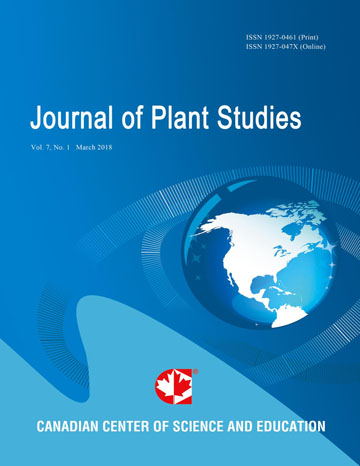Analysis of the Structure and Diversity of Prosopis africana (G. et Perr.) Taub. Tree Stands in the Southeastern Niger
- Laouali Abdou
- Boubé Morou
- Tougiani Abasse
- Ali Mahamane
Abstract
All parts of Prosopis africana are used by rural people in Niger, and this exposes it to degradation and a regeneration problems. The objective of this study was to determine the structure and regeneration of P. africana stands in the southern regions of Maradi and Zinder, Niger. Data were collected in plots, following transects after stratified sampling. Trunk diameter of all woody species was recorded in 126 plots. The diversity was analyzed and diameter structure and regeneration rates were determined. P. africana was the predominant species in both Maradi and Zinder: frequency = 40.35% and 43.95% of all species, respectively in Maradi and Zinder; importance value index = 40.57% in Maradi and 48.60% in Zinder. The Shannon diversity index was 2.82 in Maradi and 2.40 in Zinder and the Sorensen similarity index between the two regions was 0.73. According to the diameter structure, the stands were degraded in Zinder but regenerating in Maradi. The density of P. africana per hectare for trees with trunk diameter > 5 cm and < 5 cm, respectively was 16 and 51 in Maradi, and 30 and 12 in Zinder. The regeneration rate of P. africana was low compared with the general woody population. These results show the need for reforestation operations, using appropriate techniques, to avoid local extinction of the species.
 PDF
PDF
